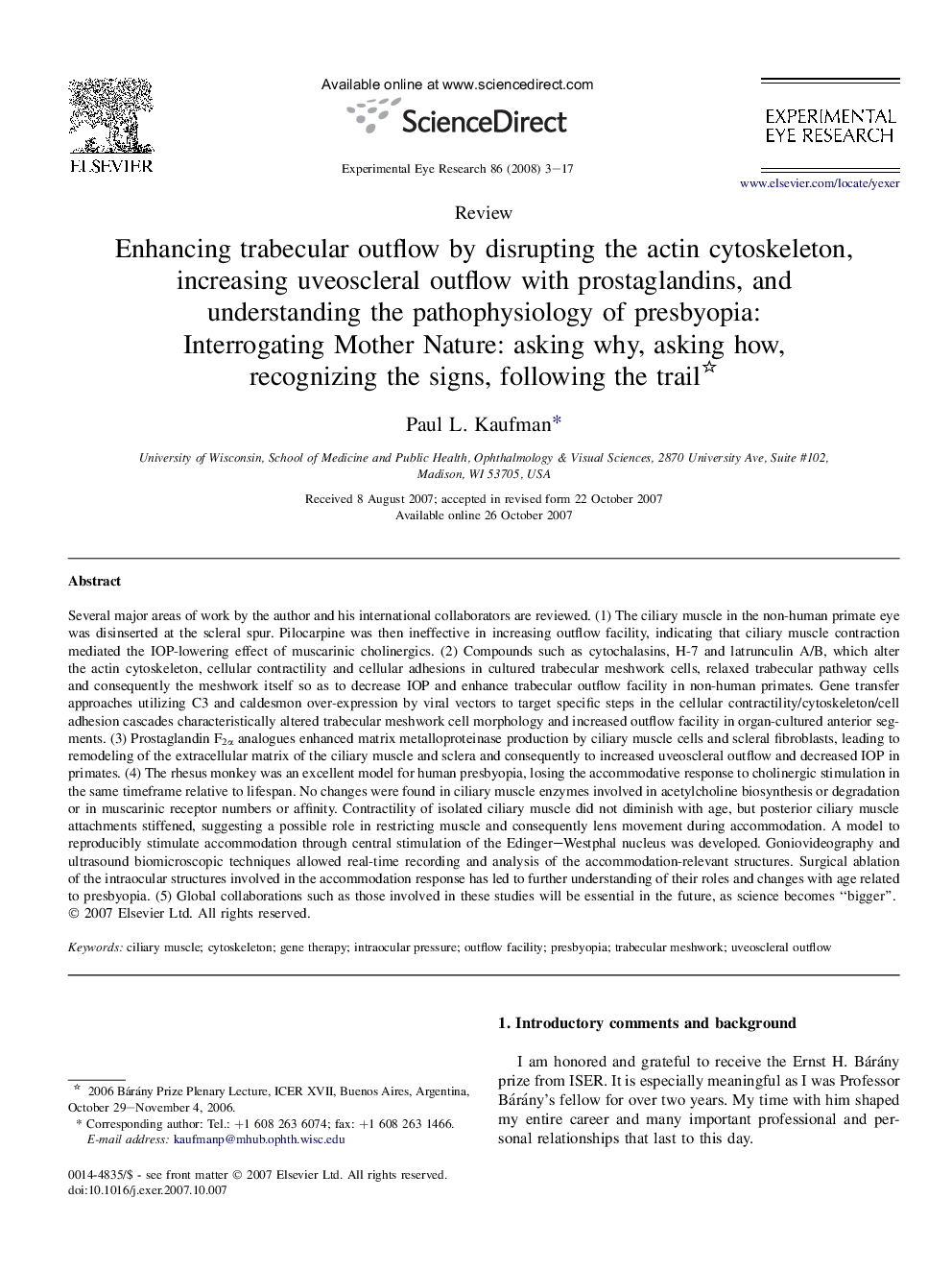| کد مقاله | کد نشریه | سال انتشار | مقاله انگلیسی | نسخه تمام متن |
|---|---|---|---|---|
| 4012815 | 1261215 | 2008 | 15 صفحه PDF | دانلود رایگان |

Several major areas of work by the author and his international collaborators are reviewed. (1) The ciliary muscle in the non-human primate eye was disinserted at the scleral spur. Pilocarpine was then ineffective in increasing outflow facility, indicating that ciliary muscle contraction mediated the IOP-lowering effect of muscarinic cholinergics. (2) Compounds such as cytochalasins, H-7 and latrunculin A/B, which alter the actin cytoskeleton, cellular contractility and cellular adhesions in cultured trabecular meshwork cells, relaxed trabecular pathway cells and consequently the meshwork itself so as to decrease IOP and enhance trabecular outflow facility in non-human primates. Gene transfer approaches utilizing C3 and caldesmon over-expression by viral vectors to target specific steps in the cellular contractility/cytoskeleton/cell adhesion cascades characteristically altered trabecular meshwork cell morphology and increased outflow facility in organ-cultured anterior segments. (3) Prostaglandin F2α analogues enhanced matrix metalloproteinase production by ciliary muscle cells and scleral fibroblasts, leading to remodeling of the extracellular matrix of the ciliary muscle and sclera and consequently to increased uveoscleral outflow and decreased IOP in primates. (4) The rhesus monkey was an excellent model for human presbyopia, losing the accommodative response to cholinergic stimulation in the same timeframe relative to lifespan. No changes were found in ciliary muscle enzymes involved in acetylcholine biosynthesis or degradation or in muscarinic receptor numbers or affinity. Contractility of isolated ciliary muscle did not diminish with age, but posterior ciliary muscle attachments stiffened, suggesting a possible role in restricting muscle and consequently lens movement during accommodation. A model to reproducibly stimulate accommodation through central stimulation of the Edinger–Westphal nucleus was developed. Goniovideography and ultrasound biomicroscopic techniques allowed real-time recording and analysis of the accommodation-relevant structures. Surgical ablation of the intraocular structures involved in the accommodation response has led to further understanding of their roles and changes with age related to presbyopia. (5) Global collaborations such as those involved in these studies will be essential in the future, as science becomes “bigger”.
Journal: Experimental Eye Research - Volume 86, Issue 1, January 2008, Pages 3–17